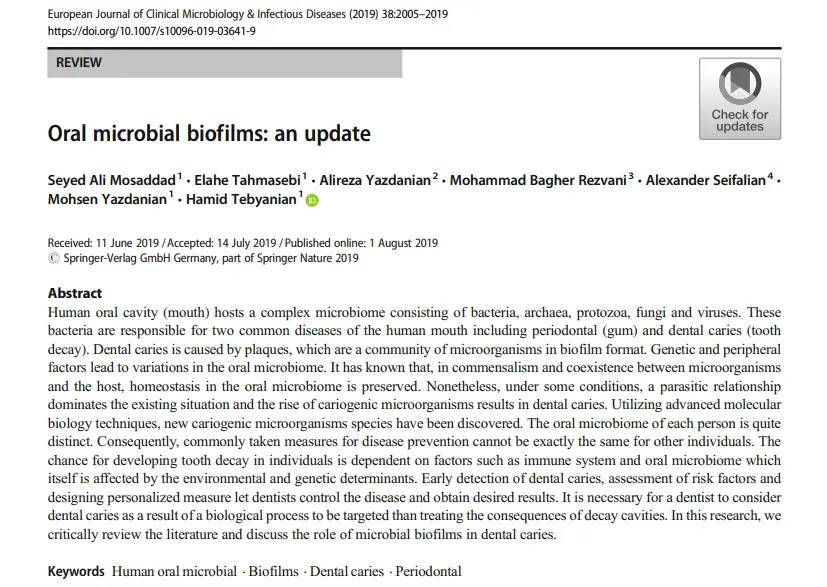Blog

Oral Microbial Biofilms - An Update
Oral microbial biofilms: an update
Seyed Ali Mosaddad1 & Elahe Tahmasebi1 & Alireza Yazdanian2 & Mohammad Bagher Rezvani3 & Alexander Seifalian4 & Mohsen Yazdanian1 & Hamid Tebyanian1
Received: 11 June 2019 /Accepted: 14 July 2019 /Published online: 1 August 2019 # Springer-Verlag GmbH Germany, part of Springer Nature 2019
Abstract
Human oral cavity (mouth) hosts a complex microbiome consisting of bacteria, archaea, protozoa, fungi and viruses. These bacteria are responsible for two common diseases of the human mouth including periodontal (gum) and dental caries (tooth decay). Dental caries is caused by plaques, which are a community of microorganisms in biofilm format. Genetic and peripheral factors lead to variations in the oral microbiome. It has known that, in commensalism and coexistence between microorganisms and the host, homeostasis in the oral microbiome is preserved. Nonetheless, under some conditions, a parasitic relationship dominates the existing situation and the rise of cariogenic microorganisms results in dental caries. Utilizing advanced molecular biology techniques, new cariogenic microorganisms species have been discovered. The oral microbiome of each person is quite distinct. Consequently, commonly taken measures for disease prevention cannot be exactly the same for other individuals. The chance for developing tooth decay in individuals is dependent on factors such as immune system and oral microbiome which itself is affected by the environmental and genetic determinants. Early detection of dental caries, assessment of risk factors and designing personalized measure let dentists control the disease and obtain desired results. It is necessary for a dentist to consider dental caries as a result of a biological process to be targeted than treating the consequences of decay cavities. In this research, we critically review the literature and discuss the role of microbial biofilms in dental caries.
Keywords Human oral microbial . Biofilms . Dental caries . Periodontal
Contact Us
+61 404 039 649
